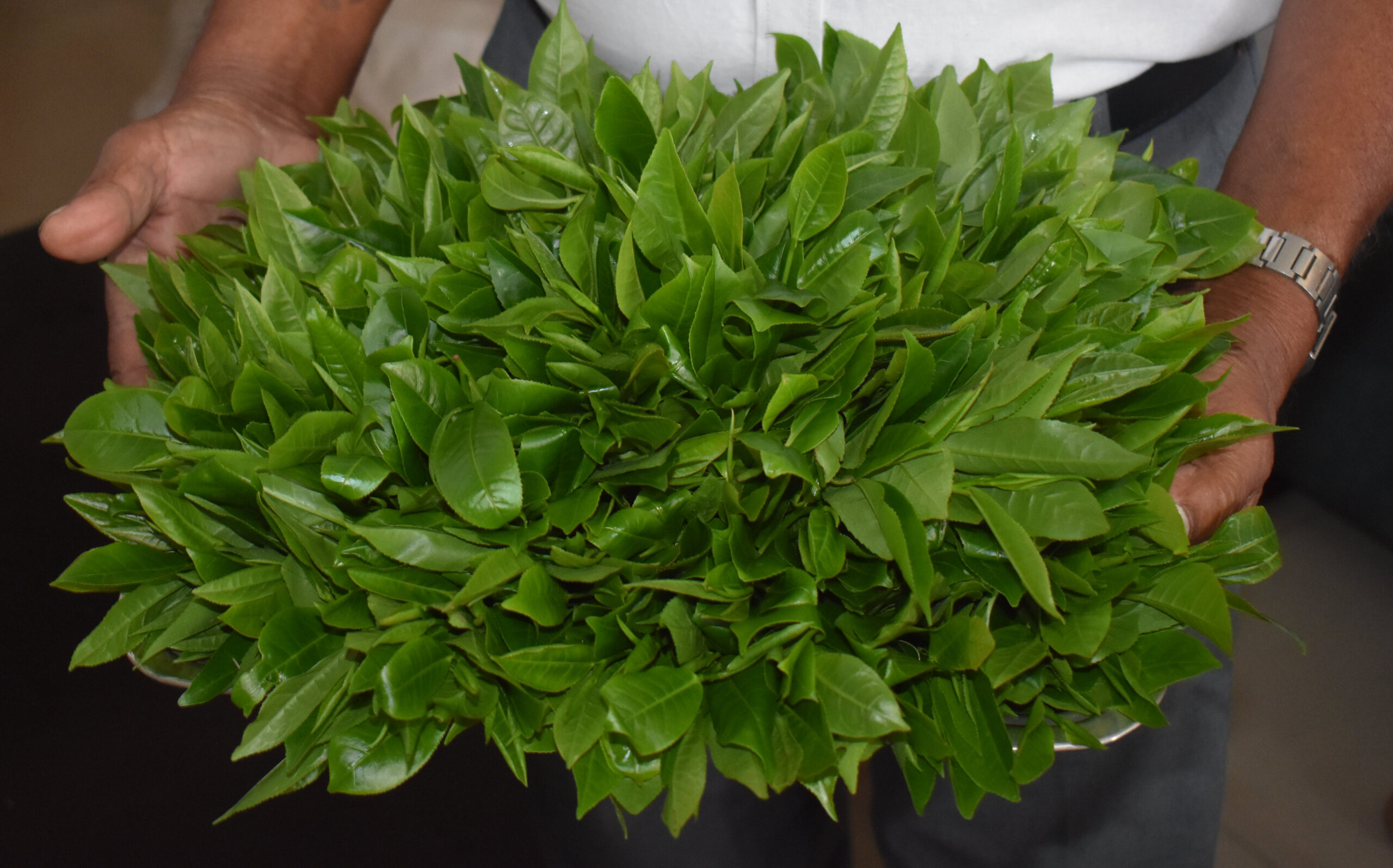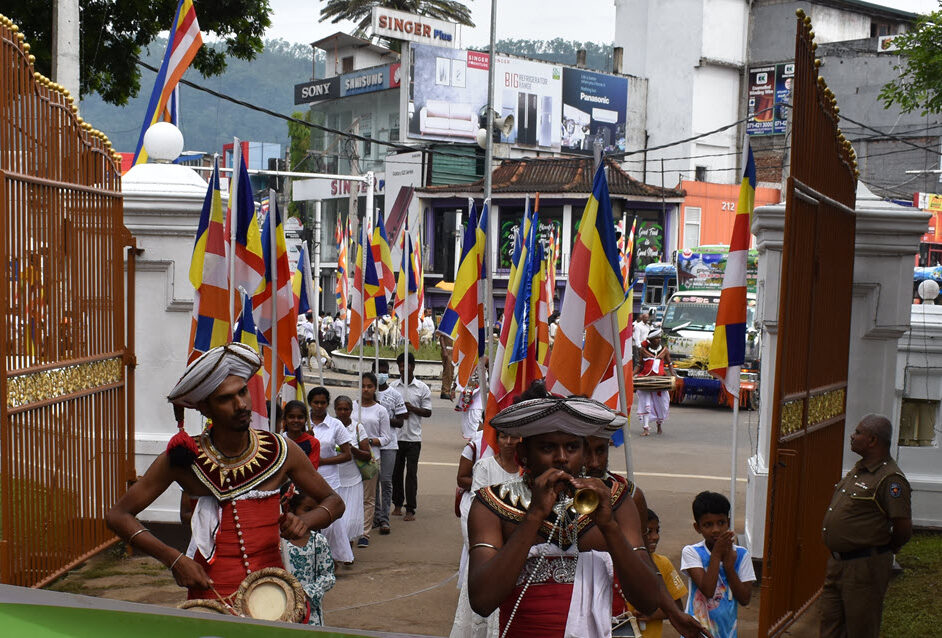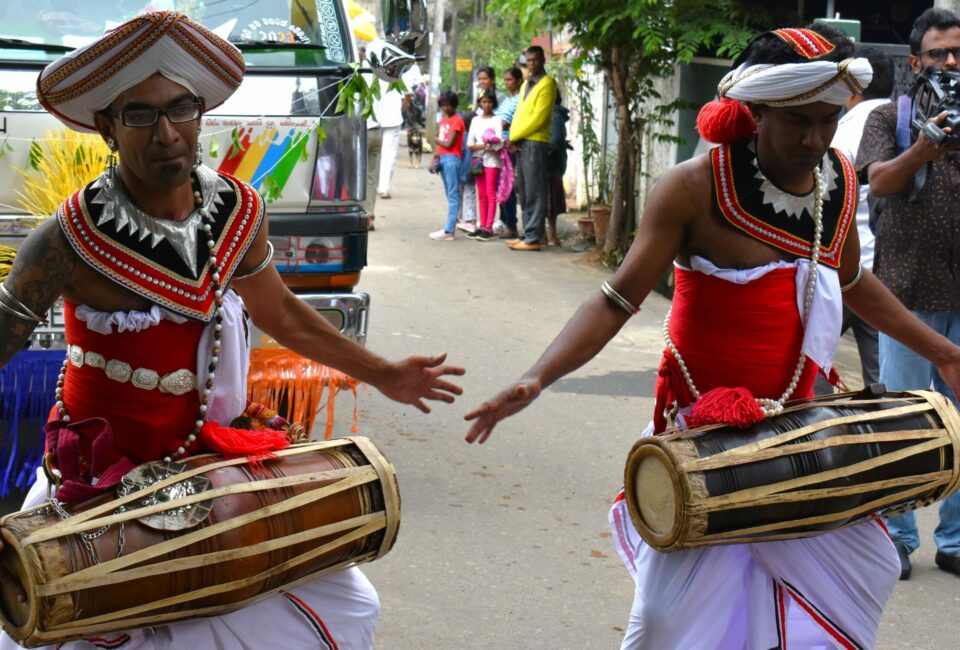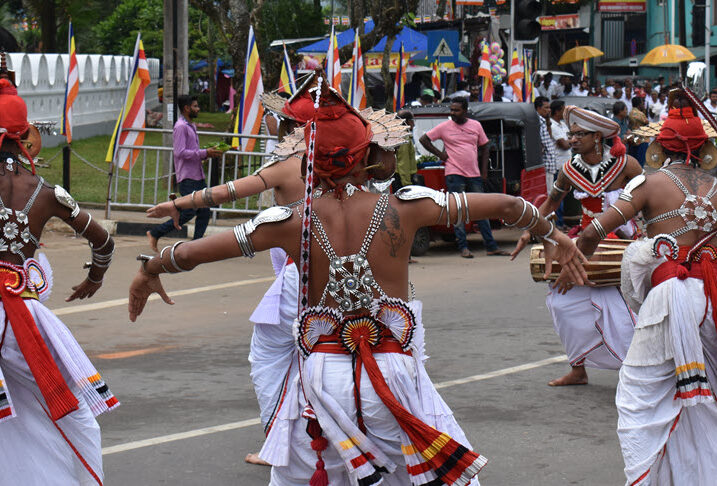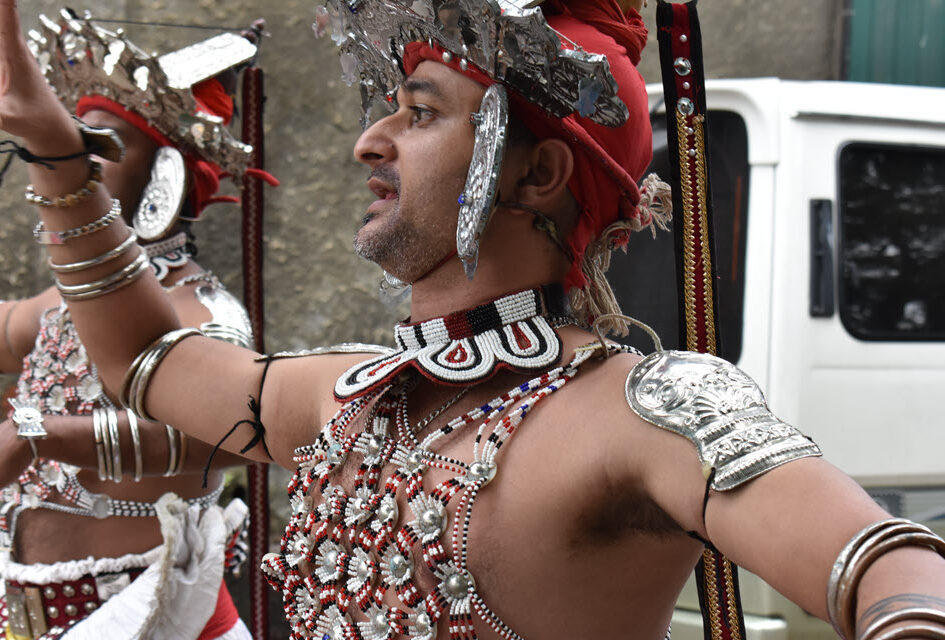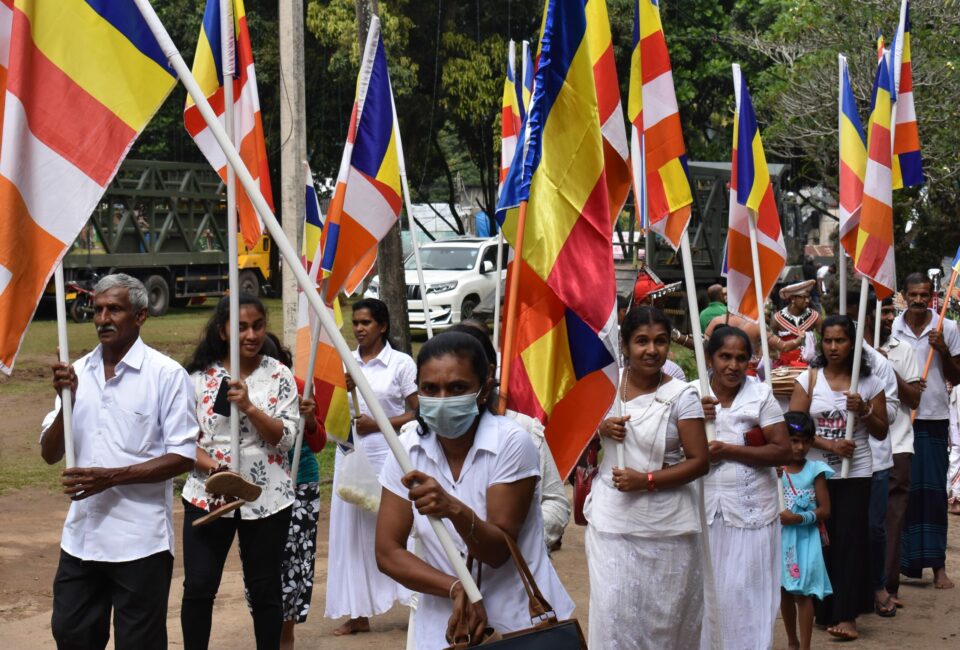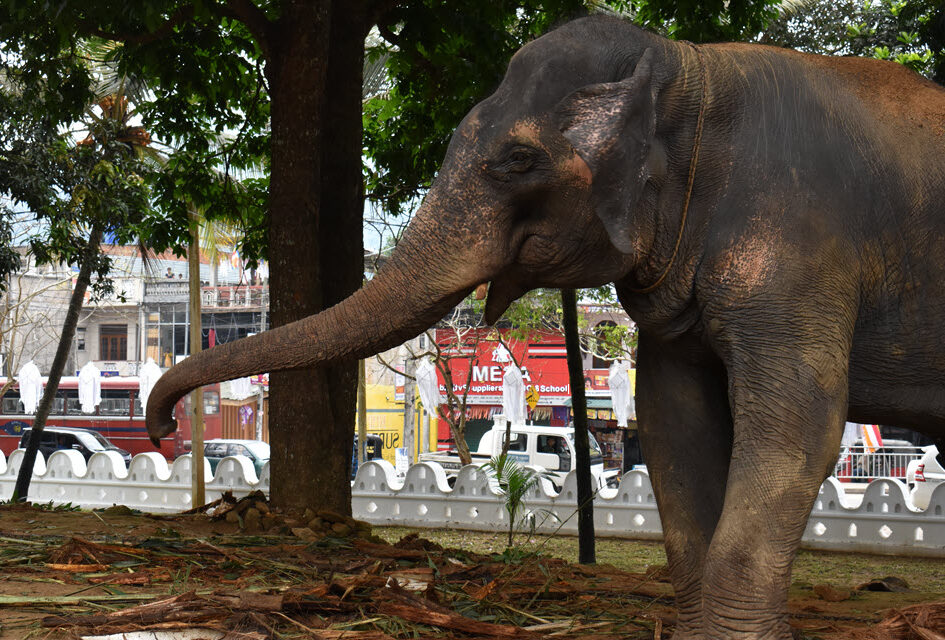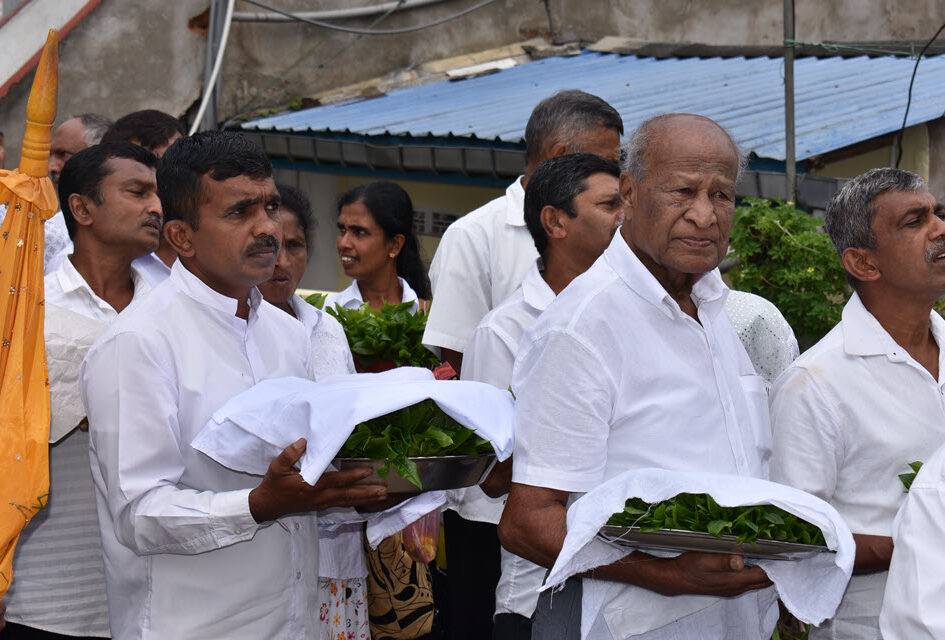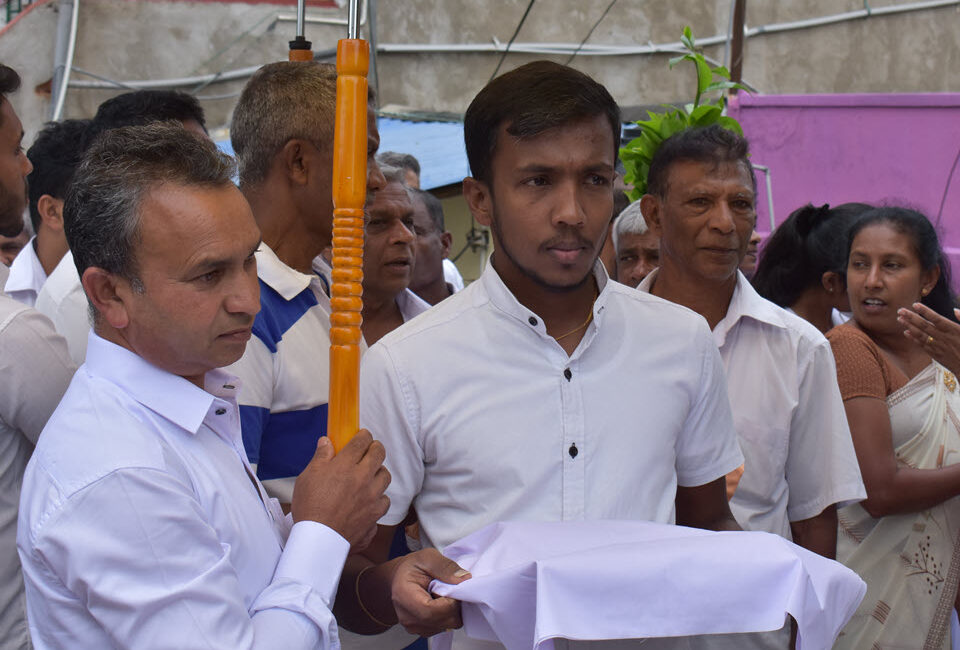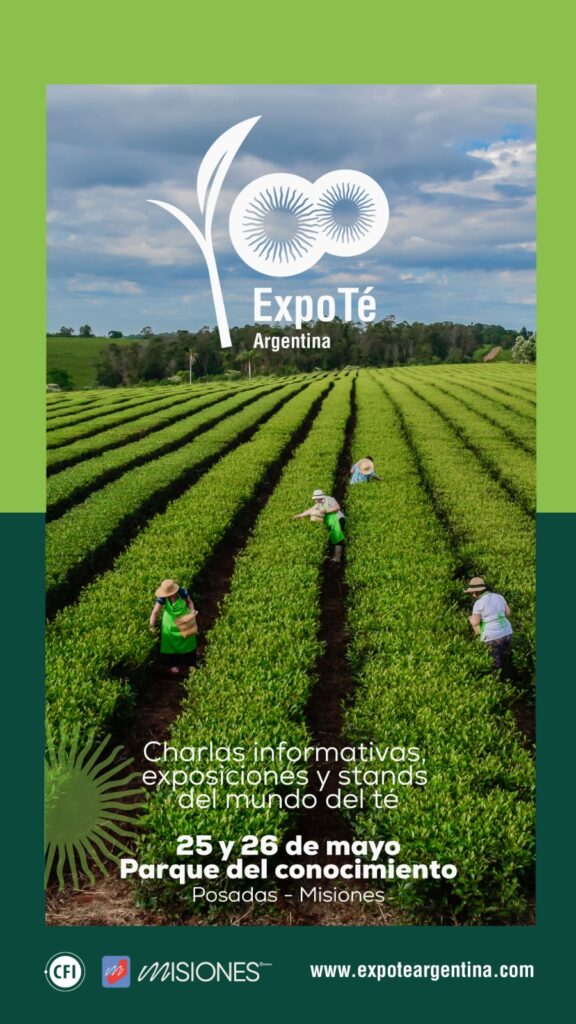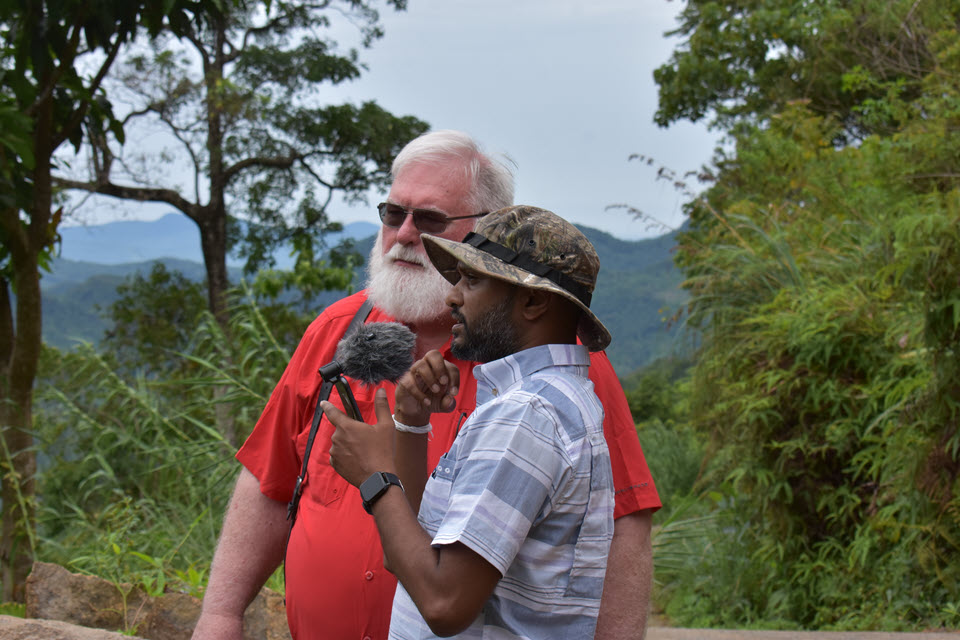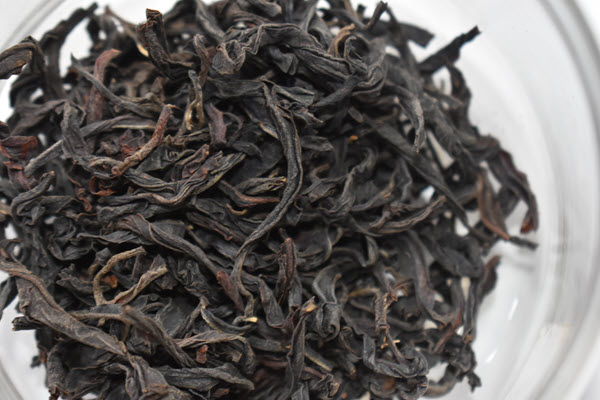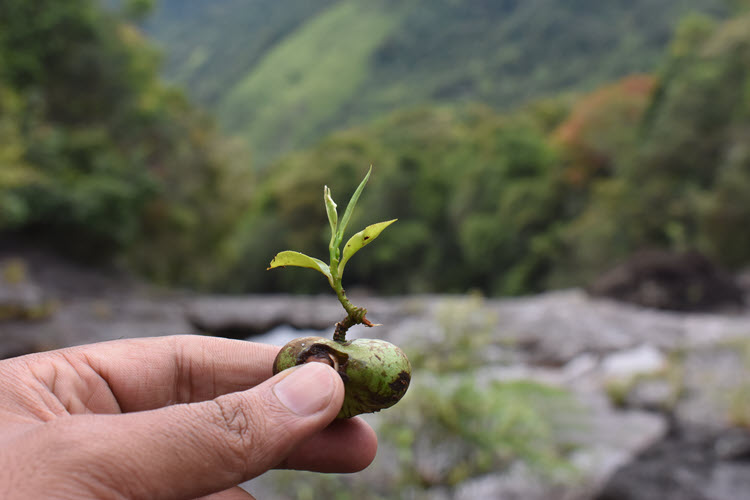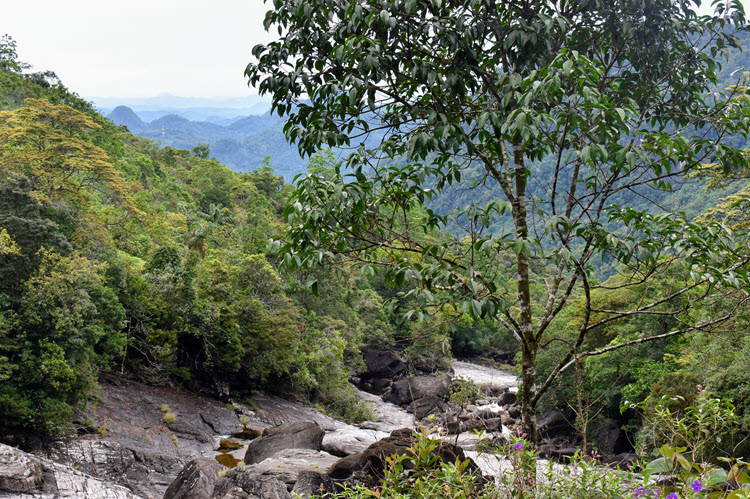Tea Biz traveled to Badulla, Sri Lanka, in early May to participate in the annual Fresh Tea Festival. Hundreds of local tea growers each carried an offering of intricately arranged tea leaves on a ceremonial plate or a small sack of processed tea. Accompanied by Geta Bera drummers and Wadiga Patuna dancers, they paraded through the city streets to the ancient Muthiyangana Raja Maha Vihara Temple courtyard, where a Buddhist monk blessed the season’s first harvest.
- Caption: The Ven. Wachissara Hamuduruvo, a Buddhist Monk and senior lecturer in the Department of Public Administration, Faculty of Management at Uva Wellassa University, presides over the first harvest blessing at the temple in Badulla.

Tea Planters and Pluckers Present First Harvest Offerings
By Dan Bolton
Badulla is an ancient city of 50,000 located in the remote central mountains of Sri Lanka. It is the capital of Uva Province, where tea is grown on steep hillsides alternately exposed to the northeast and the southwest monsoon winds. Plantations are located between 3000 and 5000 feet above sea level. Here, Thomas Lipton cultivated the world’s most popular tea blend. The district’s distinctive, aromatic high-grown broken orange pekoe (BOP) grades have earned a top price at auctions for over 150 years.
The city is a picturesque tourist location with guest inns, small hotels, resorts, and bungalows. The rail station is the remote terminus of the upcountry railway built by the British in 1924 to transport tea to Colombo.
Tea is the major employer with a mix of plantations and smallholders. Once a year, the tea community gathers for the annual First Tea Festival.
On Saturday, May 6, I joined Sri Lanka Tea Board Director of Promotions Pavithri Peiris and staff members for the annual First Tea Festival Parade. The Tea Board’s Regional Office in Bandarawela organized this year’s festival.
Parallel lines of pluckers and tea planters formed ranks at the Badulla administration building with tea offerings in hand. Masked dancers costumed in bright yellow skirts readied themselves to perform the Wadiga Patuna, along with Kandyan men wearing Ves Netuma chain vests adorned with silver ornaments. On a large flatbed truck, workers readied a silk-covered platform that supported a huge brass urn to receive offerings of finished tea. Musicians took their places, and the parade began to the beat of Geta Bera drummers.
A Buddhist monk in bright saffron robes motioned for me to walk with him along streets lined with onlookers. He explained to the curious that I had traveled 12,000 kilometers to convey the gratitude of tea drinkers in the West.
The parade route was less than a kilometer.
Barefoot we approached the temple grounds guarded by four Asian elephants. The sacred site honors Siddhartha Gautama (who lived from 563 to 483 BC). Known as the Buddha, he was a prince born in what is now Nepal who traveled to Sri Lanka 2500 years ago during the eighth year after his enlightenment.
On Station Road, near the temple entrance, a small herd of goats grazed at a roundabout near the clock tower as the drummers and dancers in bearded masks performed in the town square. Vendors sold lotus flowers to the crowd. Stands with fruit and fresh coconut lined the temple walls within sight of a brilliant white dome-shaped stupa built to preserve the Buddha’s relics.

The sand-covered courtyard was peaceful and cool, shaded by palms and bodhi trees of massive girth. The largest tree, surrounded by a gilded enclosure, its limbs braced by ornate support brackets, was planted by an early Ceylon King, Dewanampiathissa, who converted to Buddhism during his 40-year reign from 247 to 207 BC.
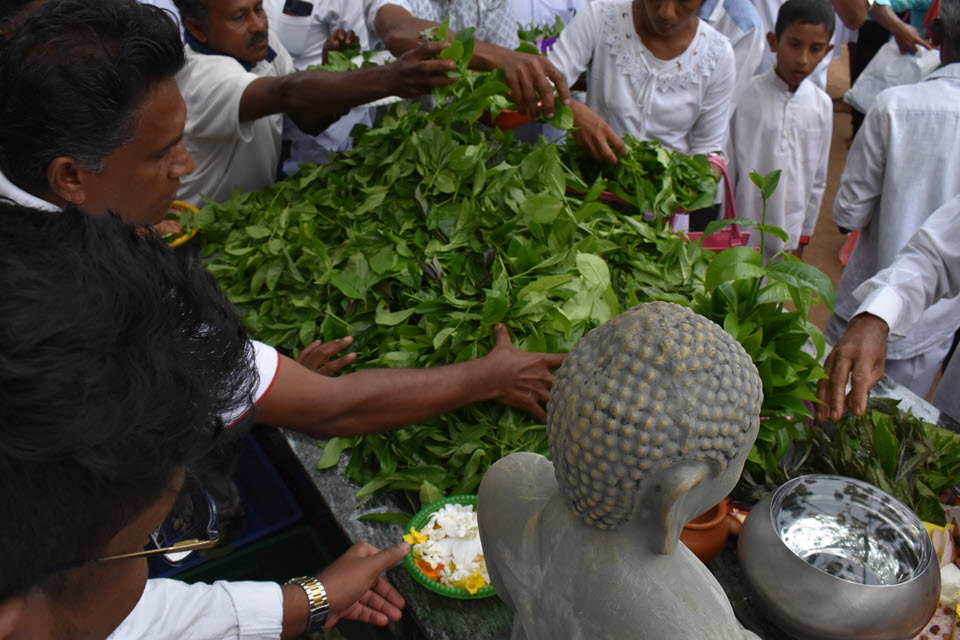
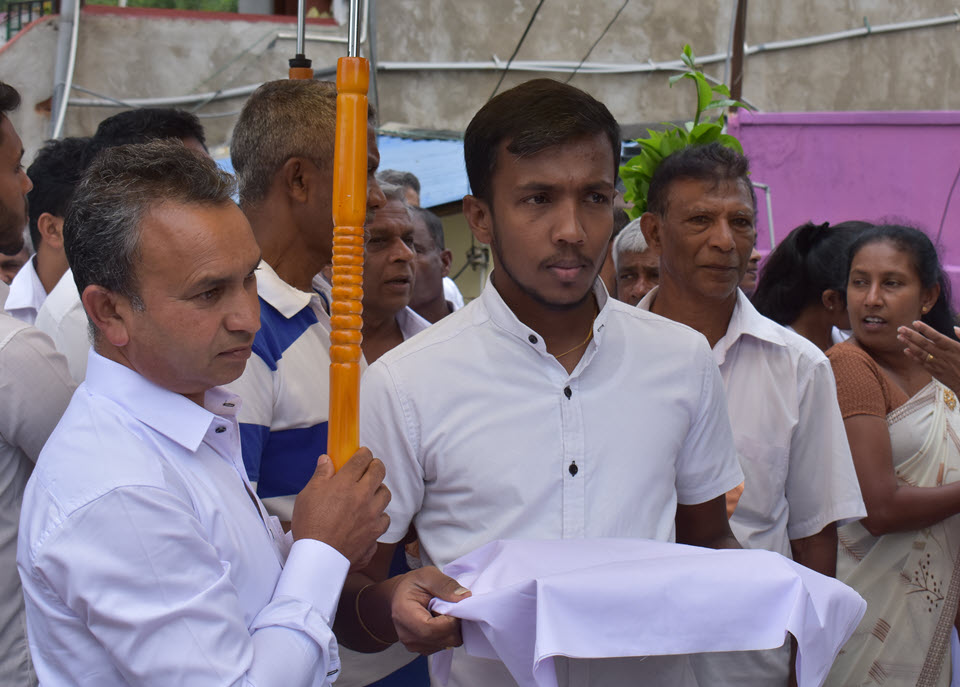
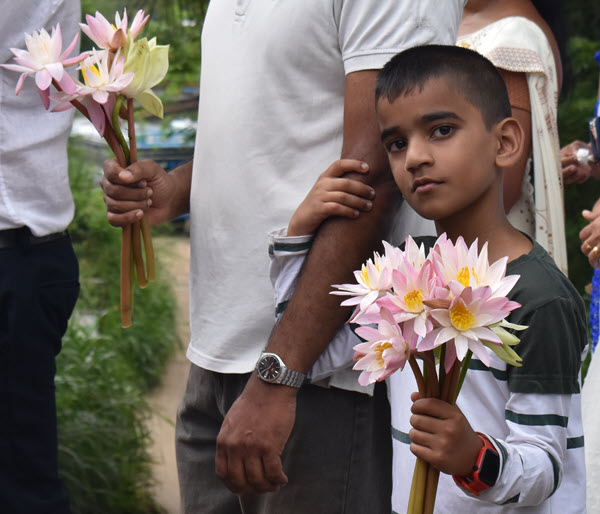
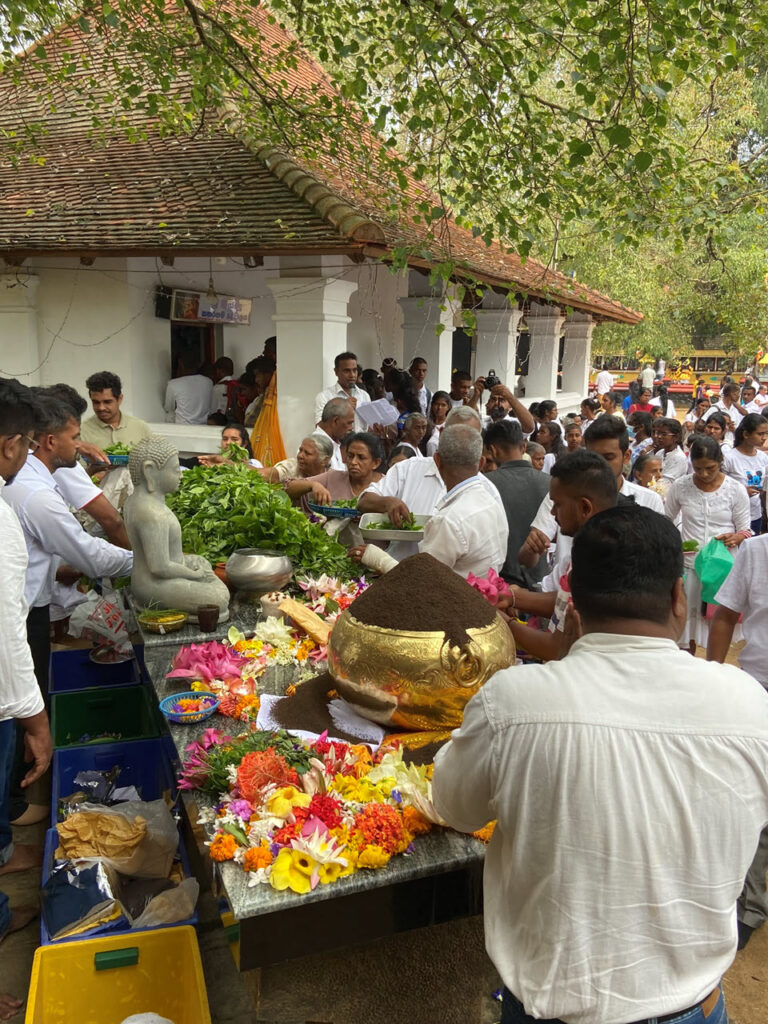
On arrival, celebrants carried the brass urn to a long marble altar and unveiled it. Planters then began tearing open small bags of tea and pouring the tea into the urn. Pluckers brought fresh leaves, forming a large pile near a statue of the Buddha. The crowd was devoted, joyous, and eager to present their teas before sitting cross-legged in the sand to join a meditation led by the monk.
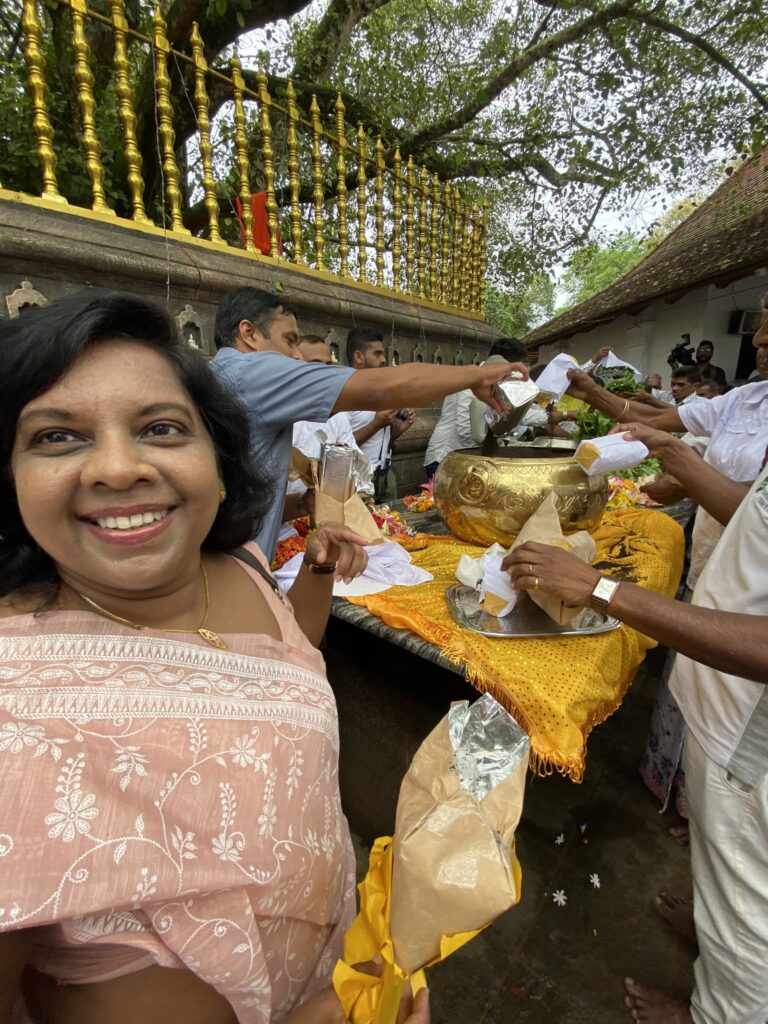
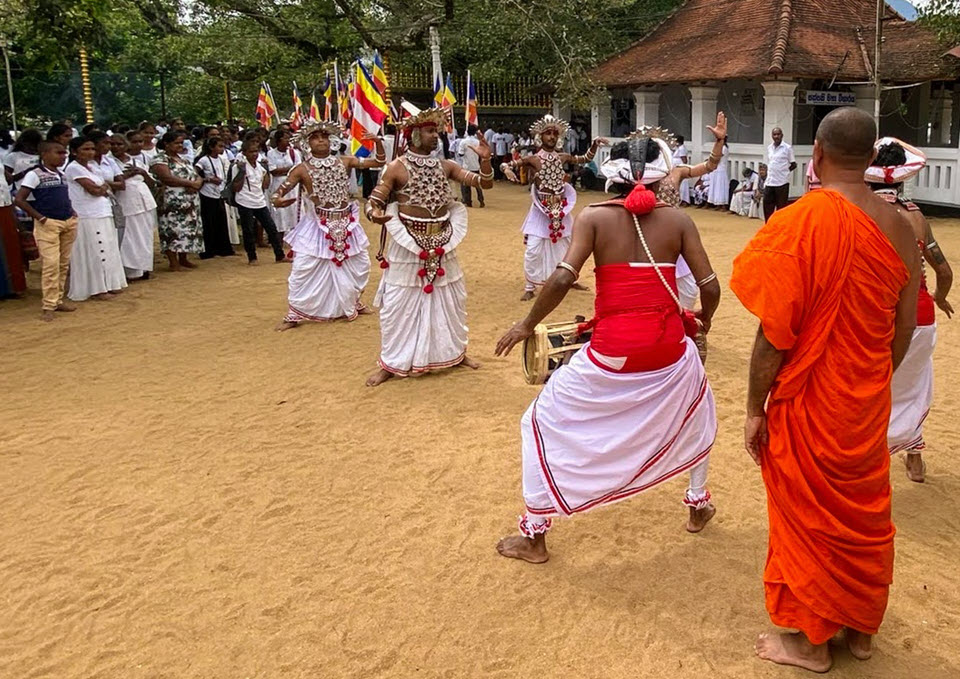
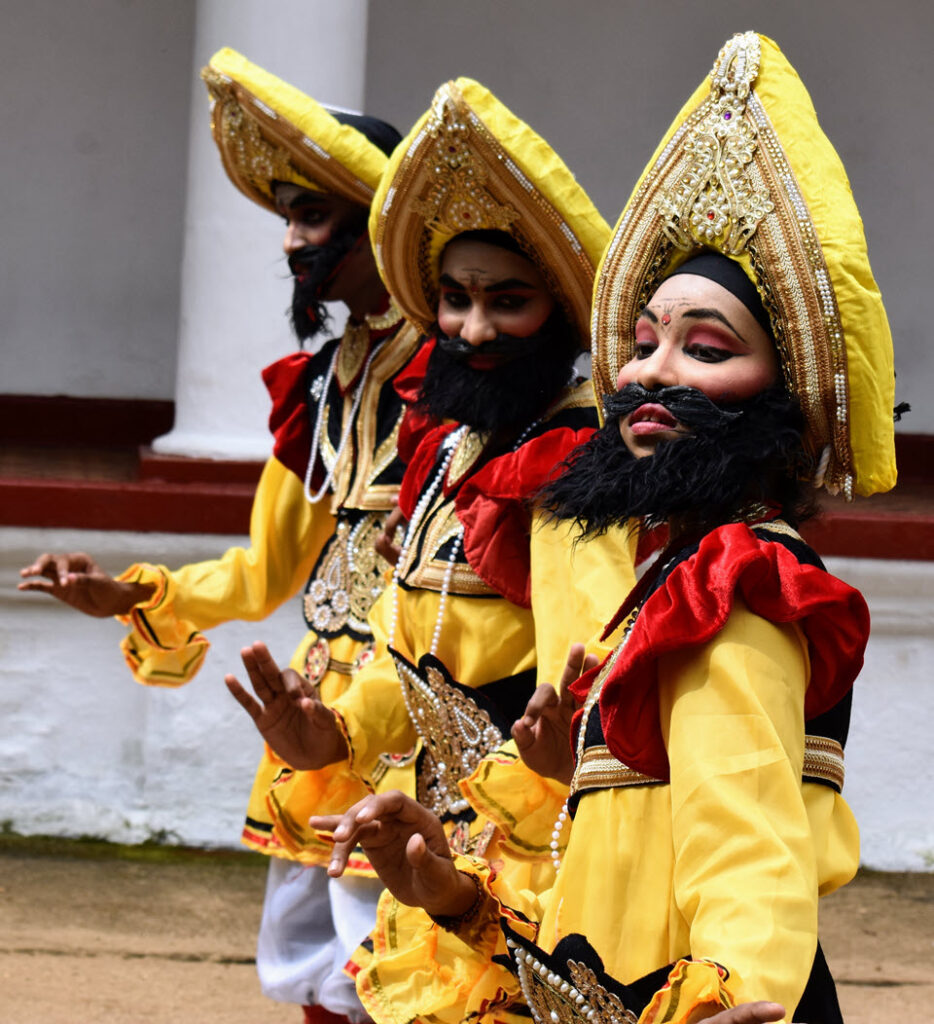
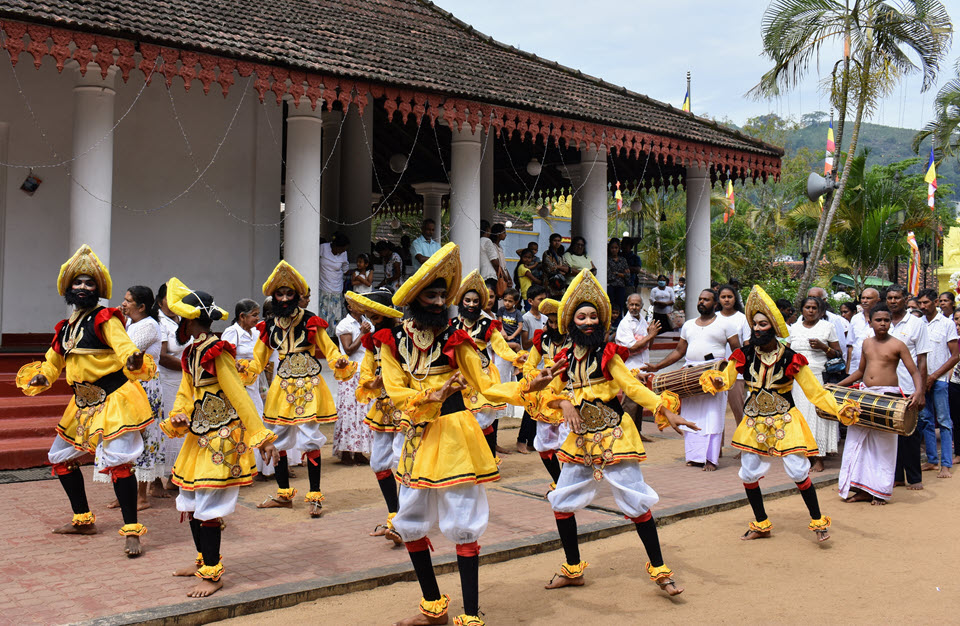
The monk’s harmonic chants calmed the crowd, who joined in. He then spoke of the harvest before blessing the tea on the altar.
He explained to the crowd that Buddhist blessings rely on energetic cultivation, not simply prayer. Buddhists earn merit through mindfulness, meditation, chanting, and performing rituals. To be blessed requires practical actions to accumulate merits and good deeds.
Everyone then socialized over tea with snacks and fruit near the museum on the temple grounds and were on their way back to the fields by noon.
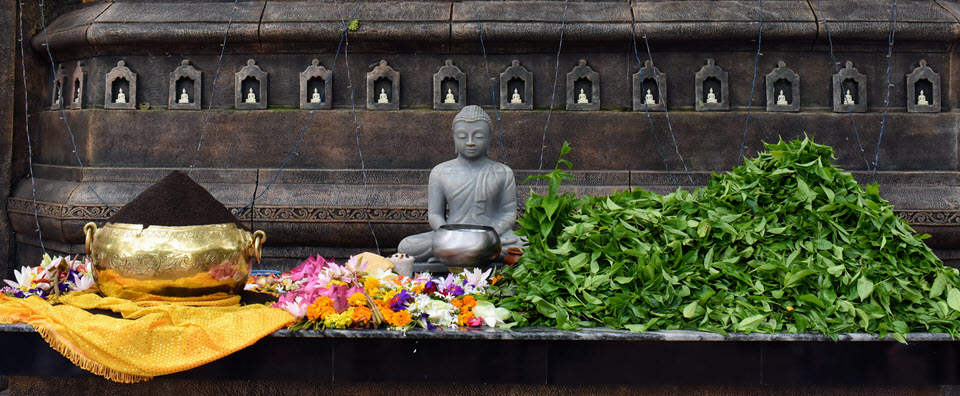
Harvest blessings originated centuries ago. Tea was first cultivated in Ceylon in 1867 and has since become one of the nation’s most important agricultural products. Sri Lanka is only 500 miles from the equator, so the harvests are not categorized as flushes. The harvest begins in May and peaks from June through September at this altitude. Production of high-grown tea in five provinces totaled 65 million kilos in 2021. Auction prices for these teas averaged $3.90 per kilo in May. Badulla’s rural economy is dominated by tea, making the blessing of the first harvest one of the more important observances on the calendar.
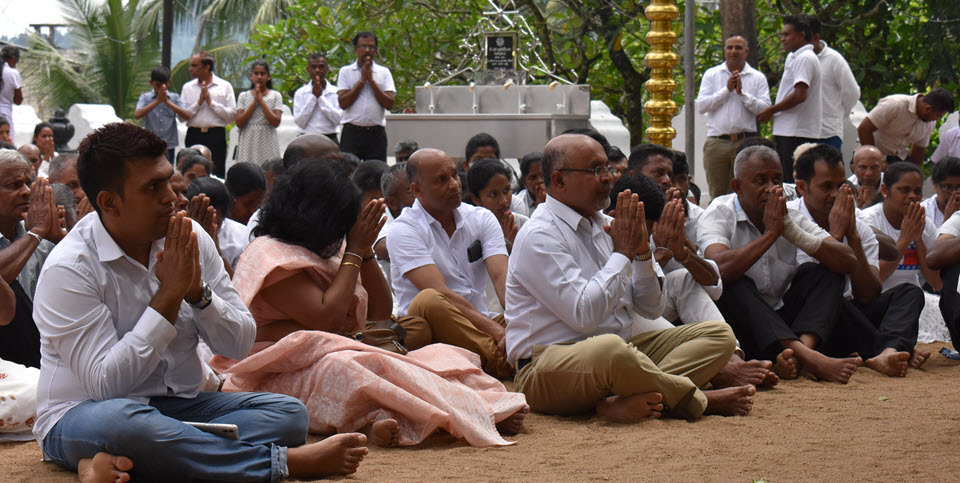
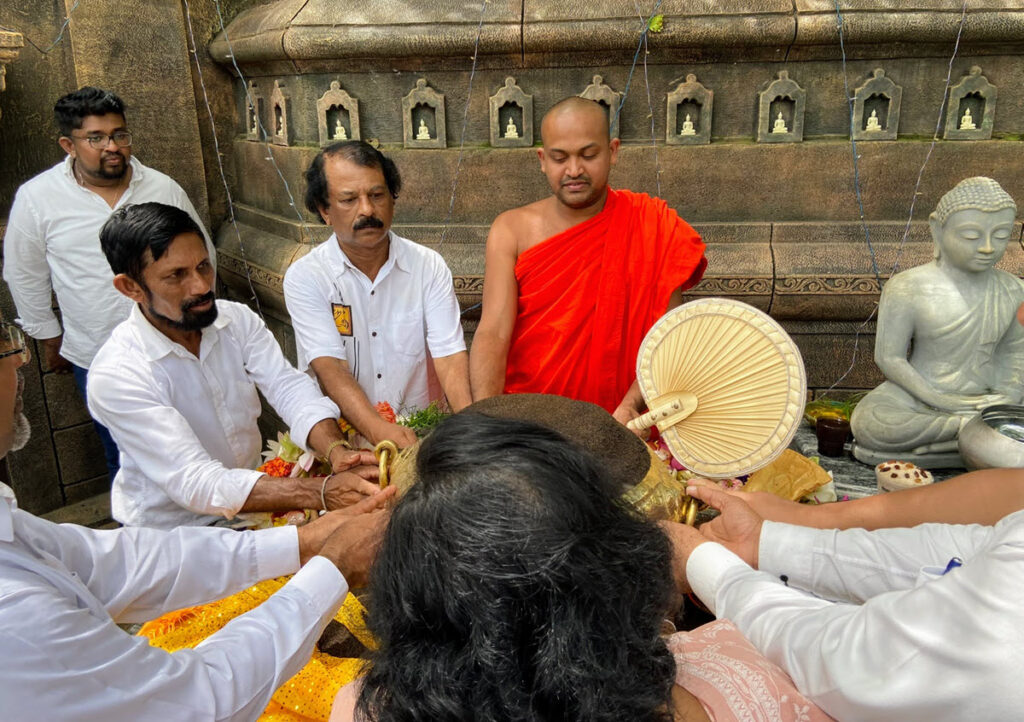
“The monk’s harmonic chants calmed the crowd, who joined in. He then spoke of the harvest before blessing the teas on the altar.”
– Dan Bolton
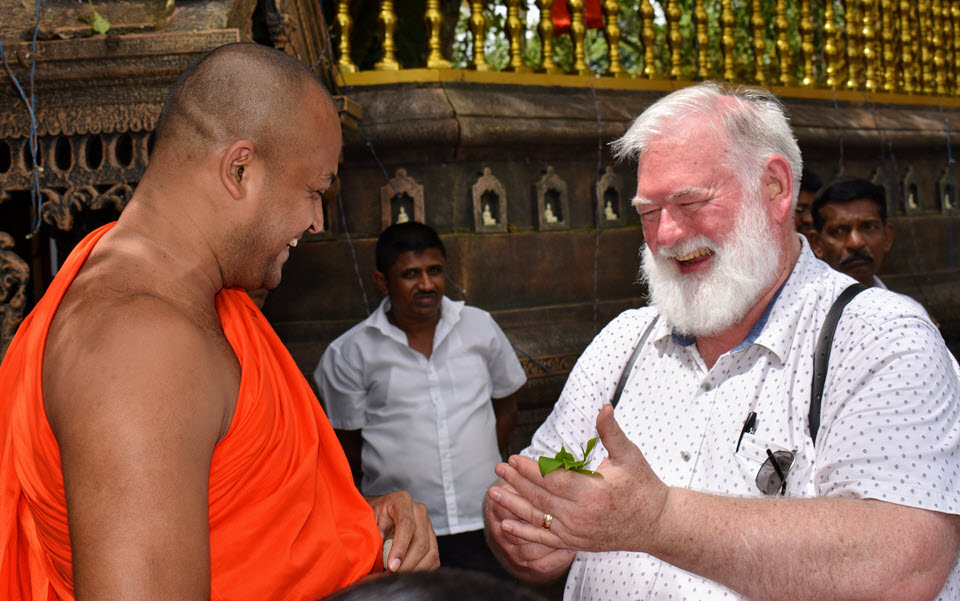
Related: The Pearl Temple
Visit Badulla, Sri Lanka (Wikipedia)
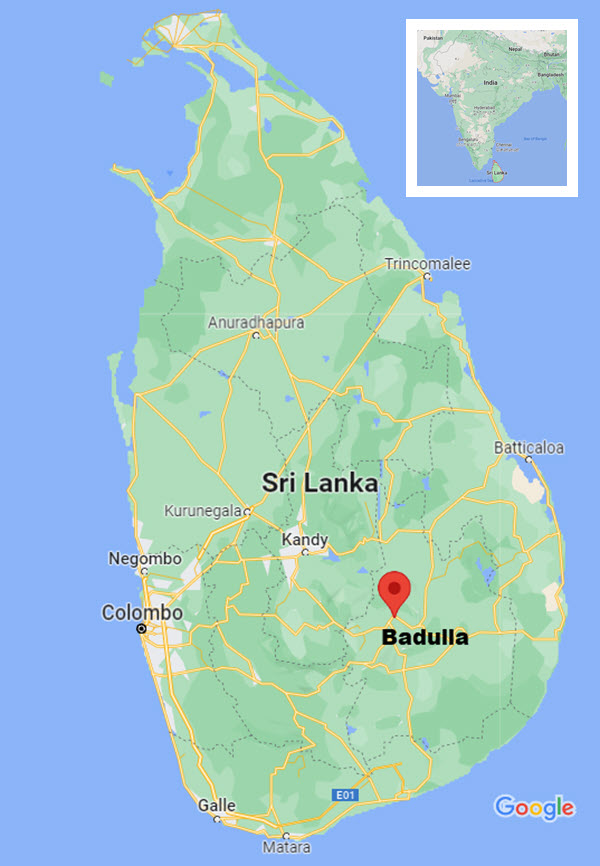
- Dan traveled more than 1,500 kilometers during a 10–day visit to Sri Lanka in May 2023. My travels were sponsored by the Sri Lanka Tea Board, chaired by Naraj de Mel, with accommodations at the Tea Research Institute courtesy of Dr. K.M. Mohotti. “I’m deeply grateful for the joyful days spent with Pavithri Peiris, the tea board’s Director of Promotion, Gayan Samaraweera, Market Promotion Officer, and Chathura Fernando, Market Analyst. Gayan and Chathura photographed the scenes above.
Link to share this post with your colleagues
Signup to receive Tea Biz weekly newsletter in your inbox.
